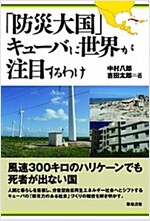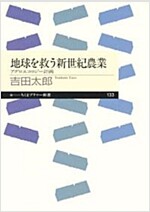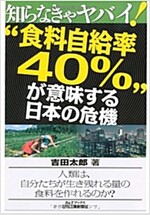Jules Pretty puts the case for agriculture's zero option
Jules Pretty puts the case for agriculture's zero option
Details Published: 18 January 2001 Created: 18 January 2001 Last Updated: 22 October 2012
----------------
"Clearly, sustainable agricultural systems can be economically, environmentally and socially viable, and contribute positively to local livelihoods. But without appropriate policy support, they are likely to remain at best localised in extent, and at worst simply wither away. " - Jules Pretty
---
Could we feed the world without causing further environmental damage?
Jules Pretty puts the case for agriculture's zero option
http://www.societyguardian.co.uk/societyguardian/story/0,7843,422955,0.html
[Professor Jules Pretty is director of the University of Essex centre for environment and society. This is an edited extract of his speech at St James's Palace on Monday to the sustainable farming conference.]
-------------
This is the problem: over the past 40 years, per capita world food production has grown by 25%, and food prices in real terms have fallen by 40%. Yet the world still faces a fundamental challenge. Despite steadily falling fertility rates and family sizes, the global population is expected to grow to 8.9bn by 2050, from 6bn today. By then, 84% of people will be in what we call the "developing" world.
Last year, 790m people went hungry and, even though increased production and more imports will lessen the problem in future, food insecurity and malnutrition will undoubtedly persist. Food demand, moreover, is expected to grow.
The conventional wisdom is that to double food supply, we need to redouble efforts to modernise agriculture. After all, it has been successful in the past. But there are real doubts about the capacity of such systems to reduce food poverty. The poor and hungry need low-cost, readily available technologies and practices to increase local food production.
There are three possible choices for future agriculture: expand the area of farmland by converting new lands, but with the result that forests, grasslands and other areas of important biodiversity are lost; intensify production in agricultural exporting countries, so that food can be sold to those who need it; or increase total farm productivity in the countries which most need the food.
The success of modern agriculture in recent decades has often masked significant "externalities", affecting both natural capital and human health, as well as agriculture itself. Environmental and health problems associated with agriculture have been well-documented, but it is only recently that the scale of the costs has come to be appreciated.
With the help of funding from the Department for International Development, Bread for the World and Greenpeace, the University of Essex's centre for environment and society set out to see if farmers can improve food production with cheap, low-cost, locally-available technologies and inputs, and whether they can do this without causing further environmental damage.
The model, which is increasingly being used in developing countries from Cuba to India and from Malawi to Peru, is "sustainable agriculture". This seeks to make the best use of nature's goods and services by integrating natural and regenerative processes, like nutrient cycling, nitrogen fixation and soil regeneration.
It minimises the use of pesticides and fertilizers that damage the environment or harm the health of farmers and consumers, makes better use of the knowledge and skills of farmers, so improving their self-reliance and seeks to make productive use of "social capital" - people's capacities to work together to solve common problems, such as pests, watershed, irrigation, forest and credit management. It also contributes to a range of public goods, such as clean water, wildlife, carbon sequestration in soils, flood protection and landscape quality.
But could it feed the world in the coming decades? We tried to audit, via the Safe-World research project, recent worldwide progress towards sustainable agriculture and assess the extent to which these projects, if spread on a much larger scale, could feed a growing world population.
Our database now contains information on 208 projects from 52 countries. This is the largest known survey of worldwide sustainable agriculture. Some 8.98m farmers have now adopted sustainable agriculture practices and technologies on 28.92m hectares. There are 960m hectares of arable and permanent crops in Africa, Asia and Latin America, so sustainable agriculture is present on at least 3% of this land.
We found that sustainable agriculture can lead to substantial increases in food production per hectare. The proportional yield increases were remarkable: generally between 50-100% for rainfed crops, though considerably greater in a few cases, and 5-10% for irrigated crops. It shows the extraordinary productive potential of small patches on farms, and the degree to which they can improve domestic food security.
Splitting the data into small farmers growing cereals or roots, and larger farmers, we found that for 4.42m small farmers practising sustainable agriculture on 3.58m hectares, average food production per household increased by 1.71 tonnes per year (up 73%). For the 146,000 farmers on 542,000 hectares cultivating roots (potato, sweet potato and cassava), the increase in food production was 17 tonnes per year (an increase of 150%); and for the larger farms in Latin America (average size about 90 hectares), total production increased by 150 tonnes per household (an increase of 46%).
Few projects, however, reported surpluses of food being sold to local markets. This could have been because as production increases, so domestic consumption also increases, with direct benefit for health, particularly of women and children. Despite this, several projects reported surpluses and regional improvements to food production.
But besides food increases, we found that 88% of the projects made better use of locally-available natural resources, 92% said they have improved human capital building through learning programmes. In more than half the projects, people were working together as groups.
The environmental benefits were also great. The most important part of any agricultural system is the soil. When it is in poor health, it cannot sustain a productive agriculture. Many agricultural systems are under threat because soils have been damaged, eroded or simply ignored by intensive farming.
Most sustainable agriculture projects, we found, seek both to reduce soil erosion and to make improvements to soil physical structure, organic matter content, water holding capacity and nutrient balances.
We found one sustainable agriculture technology spreading at extraordinary speed. This is zero or minimal tillage.
In Brazil, there were 1m hectares under "plantio direto", or zero tillage (ZT) in 1991, but by 1999, this had grown to about 11m hectares. ZT has resulted in better use of inputs, water retention, management by farmers, diverse rotations and break crops for weed control. It also cuts erosion and water run-off, so reducing water pollution.
Many sustainable agriculture projects have also reported large reductions in pesticide use following the adoption of IPM through field schools in rice agroecosystems. In Vietnam, farmers cut the number of sprays from 3.4 to one per season, and in Sri Lanka from 2.9 to 0.5 per season.
Clearly, sustainable agricultural systems can be economically, environmentally and socially viable, and contribute positively to local livelihoods. But without appropriate policy support, they are likely to remain at best localised in extent, and at worst simply wither away.



 )
)














